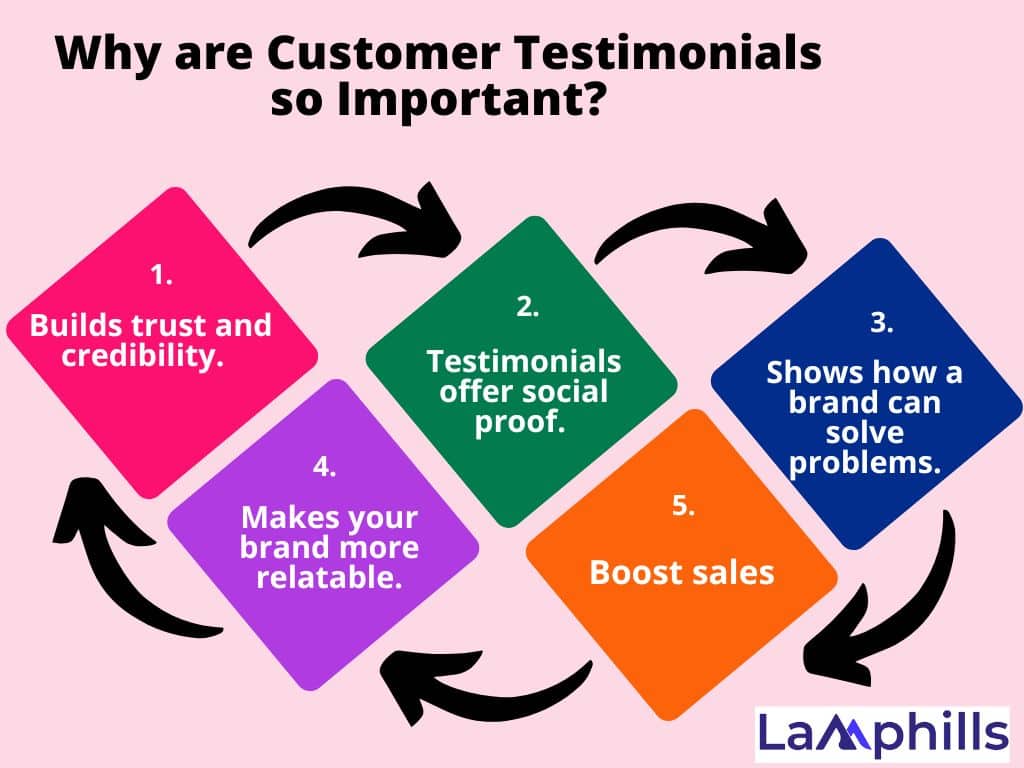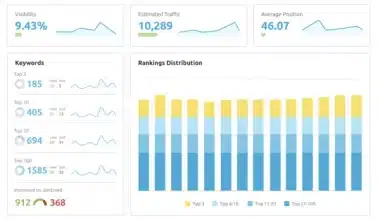Attracting customers in a crowded market can be tough. So, how do brands stand out? One effective tool today is customer testimonial.
It’s easy for marketers to talk about how great their product or service is. We can write catchy ads, take great photos, or even make fancy videos to promote our brands.
While these methods can work, nothing builds trust or proves your brand’s value better than customer testimonials.
By sharing the good experiences of your customers on your website or other online platforms, you can show potential customers why your brand is great and convince them to buy from you. In fact, 78% of shoppers say that seeing social proof – like a positive customer testimonial – makes them more likely to buy from that brand.
Not sure how to ask for testimonials or where to display them for the best impact? Don’t worry – we’ve got all the key details on customer testimonials below.
In this article, you will learn:
- What is a customer testimonial?
- Why are customer testimonials important?
- Seven types of customer testimonials with examples
- How to get customer testimonials
- Tips for creating good testimonials
Let’s get started.
Key Points
- Testimonials act like proof that your product works. When others see it worked for someone else, they’ll want to try it too.
- Nothing builds trust like a happy customer sharing their success. When people see real reviews, they’re more likely to believe in your brand.
- A great testimonial shows how your product fixes problems. It’s like a spotlight on how you can make life easier for new customers.
- Testimonials add a human touch to your brand. People love hearing real stories from others who’ve been in their shoes.
- Good reviews = more sales. The more success stories you share, the more likely people are to buy from you.
What is a Customer Testimonial?
A customer testimonial is a positive review from someone who has used your product or service and liked it. Testimonials can be written reviews, case studies, social media posts, or videos. They help show new customers that your brand is trustworthy and reliable.
Now try this: Go to any page on your website and count how many marketing claims you make. How often do you say your business is easy, smart, effective, trusted, or reliable? Are there Five claims? Eight? Maybe even more?
Then, look at the same page and count how many times you back up those claims with proof. How many facts, statistics, case studies, or testimonials do you have? Are there Three? Four? Or maybe none at all? There probably aren’t many.
The point is simple: Every marketing claim you make should have proof to back it up. And the easiest, most effective proof you can add to your website is a testimonial.
Testimonials shift the focus from the seller to the customer. Your customer was once in the same position as a potential buyer, comparing products and prices and reading lots of marketing messages. When a new buyer hears from someone like them, someone who isn’t being paid to say good things, their trust grows, and they are more likely to make a purchase.
Now, that’s not all. Let’s see more reasons why customer testimonials are so important.
Why are Customer Testimonials so Important?

I remember when everything changed for the brand I write for. We had a great product and solid marketing, but something was missing—social proof that would help new customers trust us right away. One day, after launching a campaign, we focused more on getting testimonials from happy clients.
Once we shared their stories on our website and social media, our credibility shot up. New customers didn’t need much convincing anymore; they trusted us because others had already shared their positive experiences.
Testimonials are the stamp of approval that many customers need before deciding. In a world full of fake news and mistrust of influencers, people have become cautious of over-the-top sales claims. That’s why testimonials are so important – both for customers and marketers – as they help build trust and strong relationships.
#1. Testimonials build trust and credibility.
In business, reputation is everything. Which company would you choose: one with no reviews or one with hundreds of positive ones? Exactly! I know your answer is the one with reviews. This shows how important testimonials are. They let your happiest customers speak for you and boost your reputation.
Now, statistically, 72% of consumers say positive reviews and testimonials make them trust a business more, and 88% trust online reviews as much as personal recommendations. And that’s a lot of trust you can gain by using well-written testimonials from real customers.
#2. Testimonials offer social proof.
Have you ever bought something because a celebrity recommended it? Or tried a restaurant because your friends and family love it? Maybe you’ve even joined a line just to see what the hype is about. That’s social proof, the idea that “if it works for them, it will work for me.”
When used well, this can be a powerful way to boost sales. In fact, 95% of people say that reviews ( good or bad) affect their buying choices.
A strong testimonial plays on this instinct, convincing us that we need the product or service because if everyone else trusts it, it must be worth it.
#3. Testimonials show how a brand can solve problems.
A great testimonial can highlight how you’ve helped your customers overcome common issues. Even better, it gets the message across faster than a brochure or press release, especially if it’s a video testimonial.
In fact, 44% of people say they’d rather learn about a product or service through a short video, compared to just 13% who prefer reading articles. Using video testimonials from real customers boost engagement and make a stronger connection with your audience.
#4. Testimonials make your brand more relatable.
We all love a good story, and we’re naturally curious about other people. This is why testimonials work so well. They offer a personal touch that helps customers relate to and connect with your products or services.
Big companies spend millions on fancy ads to show the human side of their business, but you can achieve the same effect for much less by using strong testimonials. It’s definitely worth it, especially when you realize that only 34% of B2B buyers trust content directly from vendors.
#5. Testimonials boost sales
Statistics show that customers who read reviews are 58% more likely to make a purchase, and having 50 or more reviews can increase conversion rates by 4.6%.
Wouldn’t you want to be part of that success? This proves that the more positive testimonials you collect, the more likely you are to increase your sales.
Getting testimonials is easier. Statistics show that 80% of reviews come from follow-up emails, and 68% have left a review for a local business after being asked.
So, it’s much better to ask for a review directly rather than waiting and hoping for it. Yes, it takes a little effort, but the increase in sales will be worth it!
I know you’re wondering how to get these testimonials from your customers. Well, I’m about to show you.
How to Collect Customer Testimonials
Asking for testimonials might seem challenging, but most customers are happy to share their experiences. Here are some simple ways to gather testimonials:
Email satisfied customers: If a customer has praised your business in a meeting or call, email them to ask if they would be willing to share those comments publicly.
You can also email all past customers. If you have an email list, send a polite message requesting testimonials. You can offer a small incentive, like a discount or gift, to encourage them to leave feedback.
Check social media and review sites: Look through your social media pages for customer comments, or use tools to see what people say about your business online. Review sites like Google Maps, Yelp, and Trustpilot are good sources. Don’t copy reviews directly from these platforms – use a widget to display them or ask the reviewer for permission.
Use testimonials about team members: If your business is new and hasn’t yet many reviews, you can share testimonials about individual team members. For example, “I worked with [team member] on [project]…”
Pay for endorsements: While not for everyone, paying a past customer, celebrity, or influencer for an endorsement can give your brand a helpful boost. Just be sure to disclose any compensation for transparency.
Ask for testimonials during the service process: After every service or in follow-up communications, request feedback to gather testimonials over time.
Reaching out to your customers for feedback doesn’t have to be complicated. A simple, friendly email can go a long way in collecting valuable testimonials. Below is an easy-to-use template that you can send to satisfied customers, asking them to share their experience with your product or service.
Now, after collecting those reviews from your customers, here is how to write a strong and engaging testimonial.
How to Write a Testimonial
Your customers have stories to tell about your brand. To turn those stories into social proof, follow these five simple steps:
1. Identify the problem your client had.
2. Explain how you solved it, and mention your product if it’s relevant.
3. Show how your solution stood out from other choices.
4. Share your customer’s experience from start to finish, focusing on the results.
5. End with a strong message, like a call to action.
Never fake testimonials. Most customers can spot fake reviews, and it’s illegal. Always focus on genuine, unique, and honest feedback. Pay attention to reviews that mention common problems like delays or poor customer service. Addressing these issues shows that your brand listens and cares about customer satisfaction.
The goal is to show potential clients how your business made others happy, so focus on the relationship with your customer, not just your brand or solution.
Tips for Writing a Great Customer Testimonial
While the basic steps for writing testimonials are helpful, it’s important to avoid making them sound too rigid. You want to show that you treat every customer as unique so that a simple copy-and-paste format won’t work.
The key to writing a strong testimonial is to think of it as storytelling. You and your customer are the main characters, and the problem they face is the challenge you worked together to overcome.
Here are a few tips to help you gather the right information and craft a great testimonial:
#1. Create a memorable experience.
Before you even start asking for testimonials, focus on giving your customers an experience they won’t forget. When customers have a positive experience, they’ll be more likely to share it in a testimonial.
#2. Reach out to strong connections.
Talk to clients you’ve built a good relationship with over the years. These people will have great stories to share and will be excited to help your company.
#3. Set clear expectations.
Let your customer know how the testimonial process works. Explain what the final result will look like and allow them to review it before it’s published. Assure them that they will be the hero of the story.
#4. Gather specific details.
Collect key information like the customer’s name, title, and company. Adding a company logo can make the testimonial feel more personal and credible to readers.
#5. Ask good questions.
Some customers are natural storytellers, while others need a little help. Prepare questions in advance to guide the conversation. Here are a few examples:
- What problem were you facing, and how did it affect you?
- Why did you choose to work with us?
- If you could describe your experience in one word, what would it be?
- How has your situation improved since working with us?
#6. Keep it short and focused.
Even if you gather great information, keep the testimonial short and focused. People are more likely to read a concise testimonial than a long one.
#7. Be authentic.
Authenticity builds trust. Avoid exaggeration and stick to the facts in your testimonials.
#8. Make it visually engaging.
Use images, videos, or social media posts to bring your testimonials to life. This will make them more engaging and help tell the story more compellingly.
Now, let’s learn the basic types of customer testimonials with examples.
Types of testimonials with examples:
There are different types of testimonials, and each one shows why your product is worth it in its own way. In this article, I’ll explain six basic types of testimonials with simple examples so you can see how they can help boost your brand’s credibility.
#1.Video Testimonials
A video testimonial is when a customer shares their experience on camera. It allows people to see their expressions, hear their tone, and feel the excitement or relief in their voice.
For example, in a video, a customer talks about how switching to new software saved them hours every week, showing excitement and gratitude for the improvement.
Video testimonial adds a face and voice to the story, making it feel more personal and real. Seeing someone talk about their experience makes it easier for potential customers to trust that the product is effective.
It’s a powerful format, but it needs to be well-produced to have the best impact.
#2. Written Reviews
Written reviews are the most common type, often found on websites or social media. They are easy for clients to write and simple for potential customers to read. A well-written review that highlights the strengths of your service can be very effective.
For example, uSERP, a digital PR agency, uses written reviews on their website. They include the name and role of the person giving the review to add more credibility.
#3. Quote Testimonials
This is when a customer shares a short statement about their positive experience with your product or service. It’s often just a sentence or two.
Example: I’ve been using this app for months, and it has made my work so much easier!”
Quote testimonials are quick and easy for customers to give. They are great for showing that people like what you offer, even if the testimonial is short and simple.
#4. Success Story Testimonials
A success story testimonial goes into more detail. It explains how your product or service solved a problem for a customer and how things improved for them.
Example: I struggled with organizing my tasks until I started using this productivity tool. In just a few weeks, I went from feeling overwhelmed to being on top of everything. Now, I get more done in less time, and my stress has dropped significantly.
Success stories show the journey from problem to solution. They help potential customers see how your product can make a big difference in their lives or business.
#5. Social Media Shoutouts
A social media shoutout happens when a customer shares something positive about your product on platforms like Twitter, Facebook, or Instagram. These are often casual and spontaneous.
For example, A tweet like: “Just got my delivery from @ABCBrand! The shoes are perfect and arrived so fast. Highly recommend!”
Social media shoutouts are great because they feel genuine and reach a wide audience. Customers love to share things they’re excited about, and others trust what they see from real people online.
#6. Influencer or Expert Testimonials
This is when a well-known person, like a social media influencer or an expert in your field, talks about your product. People trust their opinion because they are seen as knowledgeable.
Example: A fitness influencer posts about how a certain protein powder helped improve their workout recovery and overall performance.
People listen to influencers and experts because they believe they know what they’re talking about. When an influencer recommends your product, their followers are more likely to trust and try it.
#7. “Before and After” Testimonials
This type of testimonial shows how a customer’s situation improved after using your product. It compares how things were before and the results they saw after.
Example: Before I switched to this vacuum cleaner, cleaning my house felt like a huge chore. Now, it takes half the time, and my floors have never looked better!”
“Before and after” testimonials are powerful because they show real, noticeable results. They let potential customers see what kind of improvement they can expect if they use your product.
Each type of testimonial helps build trust in your product by showing potential customers how it has helped real people. They are simple ways to let others do the talking for you, making your brand more credible.
Conclusion
Client testimonials are like movie trailers for your business. They grab attention, make people curious, and attract new customers.
You now know how to create them. You’ve seen how powerful they can turn potential customers into loyal ones. The secret? Real stories from real clients who love your products or services. Success stories work wonders!
At first, getting client testimonials might feel challenging, but you’ve got it under control! You know when to ask for them and how to do it without being too pushy. Most importantly, you understand the legal side of using these valuable reviews.
Frequently Asked Questions
What makes a good testimonial?
Good testimonials should connect with your audience and others who might benefit from your work later. The best testimonials share a story that has challenges and solutions. In the end, your customer is the hero, but your brand helps them achieve their goals.
What is the impact of customer testimonials?
Customer testimonials are very important for a business’s success. They help build trust, show that the business is reliable, and can influence what people decide to buy. Testimonials highlight good experiences from customers, attract new customers, and encourage loyalty.
What is a testimonial example?
I just wanted to say that you do a great job. I’m happy I chose to work with you. Your websites are super easy to update and manage. I never have any issues.
How to write student testimonials?
I learned a lot in this class, and I can see my writing getting better. I’m really thankful.” “Thanks to your course, I’m creating my writing ‘process’ and feeling comfortable with my style. I’m writing every day and staying focused during my writing time.
What are examples of testimonials as evidence?
Testimonial evidence examples include; witnesses sharing what they saw — like shoppers describing a robber and what happened during a robbery, people describing how a suspect or victim acted at certain times, or people talking about past arguments or fights between others.
Here’s a simpler version:
What makes a good testimonial?
Testimonials should connect with your audience and show how others can benefit from your work. The best ones tell a story of a problem and how it was solved. In the end, the customer is the hero, and your brand helps them reach their goals.
How to conclude a testimonial?
You don’t always need to end a testimonial with a call to action (CTA), but it’s okay to add one if your clients include it. If someone says something like, ‘I recommend anyone new to [industry] reach out to this brand,’ feel free to include it.
Similar Articles
15 Ways to Use Technology to Improve Customer Engagement
Customer Marketing: 8 Killer Customer Marketing Strategies for Building Your Brand
A Detailed Guide to Creating an Outstanding Customer Retail Experience in 2024






